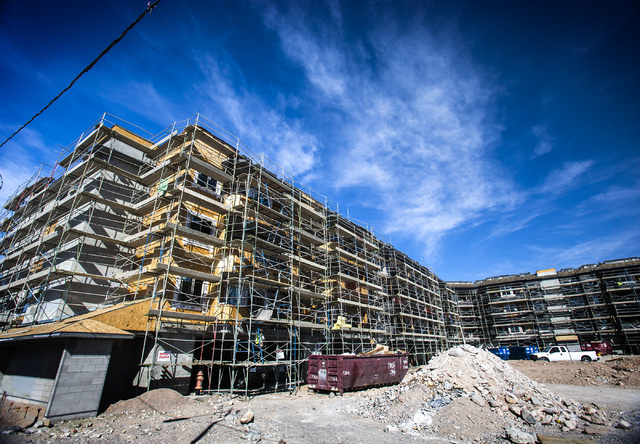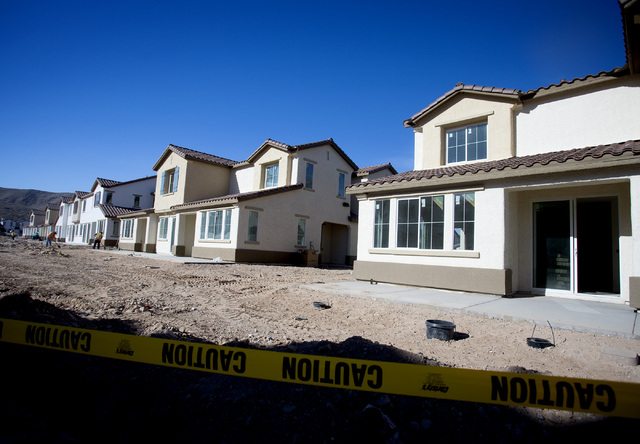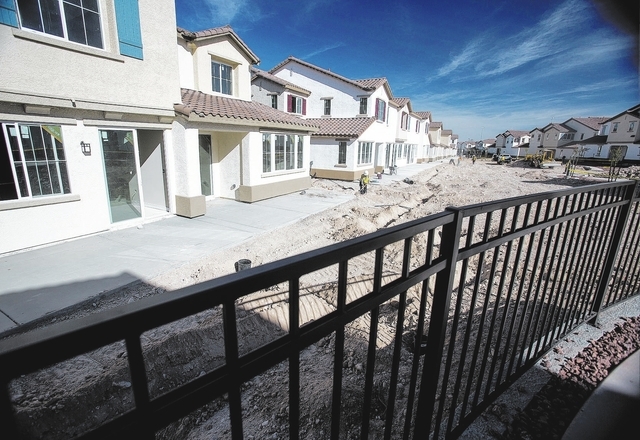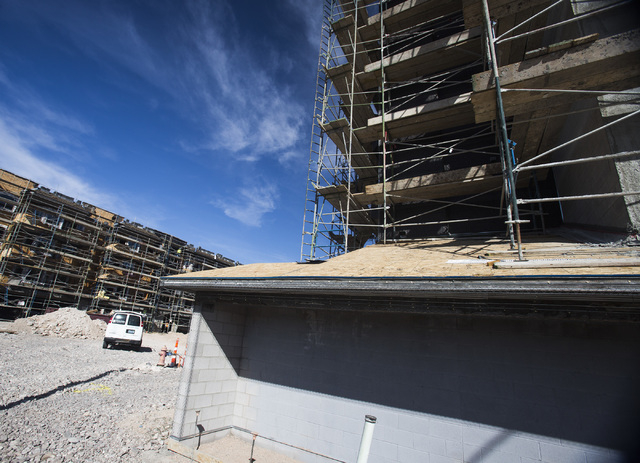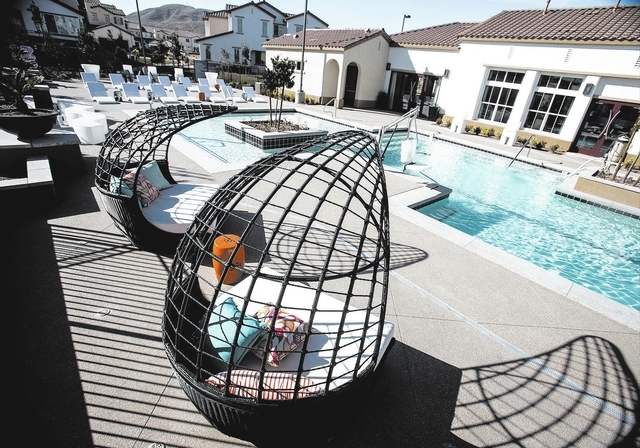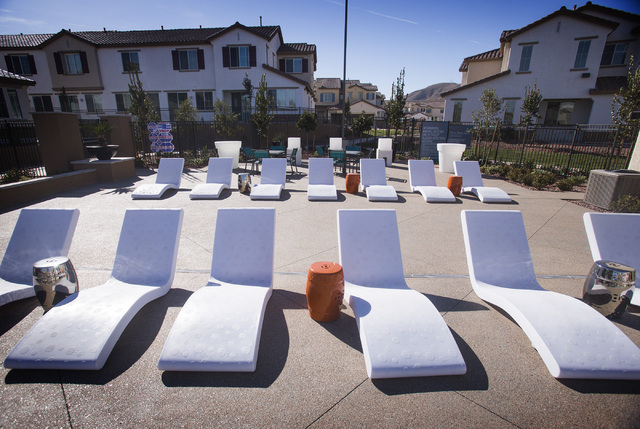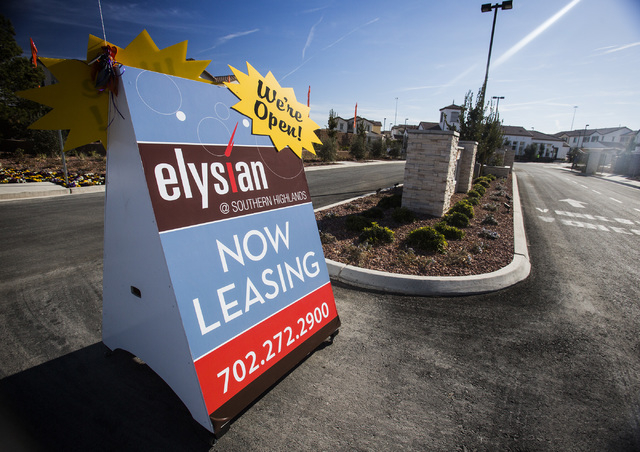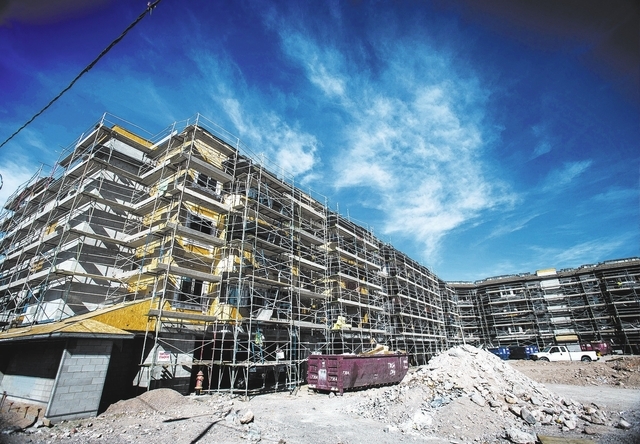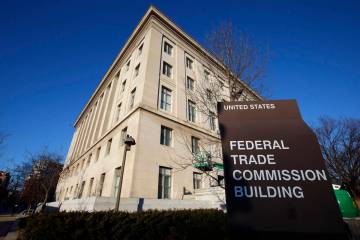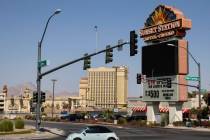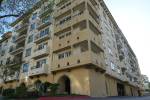Las Vegas poised for an apartment boom
Sure, the Las Vegas housing market has perked up — but enough to justify a nearly tenfold increase in new apartment units?
We may have an answer soon. Developers are on track in 2014 to deliver 3,000 multifamily rental units across Southern Nevada, up from a 20-year low of 370 units in 2013, according to research from Spence Ballif, a senior vice president in the local office of commercial real estate brokerage CBRE.
Many of those units are coming courtesy of projects slated as for-sale homes before the recession hit. There’s Elysian at The District in Green Valley Ranch, initially planned as condominiums, and Elysian at Southern Highlands, originally pegged as a townhome community by big builder DR Horton. The former City Club, near Silverado Ranch, is now back under construction as The Lennox, while the one-time Manhattan West in southwest Las Vegas has new life as The Gramercy.
“Las Vegas has clearly turned the corner. The jobs story is better, and the housing story is better. That’s caught a lot of attention,” Ballif said. “From an investor standpoint, Vegas is one of the few markets out there that very clearly has a recovery story ahead of it. We’re still far from peak rents, peak vacancy and peak pricing, and that’s very appealing.”
Still, it’s “probably a little early for us to start building 3,000 units,” Ballif said. He added that he would be more comfortable with 2,000 units, which may be what the market actually delivers in 2014 if there are any project delays.
Here’s why 3,000 planned units might raise a few eyebrows:
First, vacancy rates haven’t bounced back. The number of empty units ended 2013 at 9.18 percent. That was an improvement over 2012’s 9.68 percent, but it trailed the 14-year market average of 7.8 percent. In some sub-markets, such as lower-end Class C properties, vacancies are higher still, at 12.45 percent, Ballif said.
Nor are rental rates where they were. The average monthly lease rose 2.9 percent in 2013, to $781 — the first overall increase in seven years. Compare that average with the $932 peak in 2007.
Finally, any new apartment project has to compete with thousands of existing single-family homes on the market as rentals.
RISKY BUSINESS
John Restrepo, a principal with Las Vegas analysis firm RCG Economics, said Southern Nevada still poses perils “if developers don’t position themselves properly, or if they don’t understand the underlying economics. We still have relatively weak job and wage growth. It’s still a price-sensitive market right now, and largely a blue-collar labor force,” all of which make it important to build and price accordingly.
Yet, investors are flocking to the market because they see potential in the “green shoots” of economic recovery, Restrepo said. They appear especially interested in financing high-end, Class A properties, which have pricier interiors and more community features.
That is the case for George Smith Partners, the Los Angeles-based real estate investment banker that arranged $51 million in construction financing for Elysian at The District, which is set to start building in the next two weeks. The 360-unit complex at Paseo Verde Parkway and Desert Shadow Trail will sit next to the Green Valley Ranch shopping venue. Elysian at The District will have units of up to 1,860 square feet, plus fitness and recreation centers, a pool and an outdoor lounge area.
David Rifkind, principal and managing director of George Smith Partners, called the site “one of the top three locations” in the Las Vegas Valley.
“It’s a very special project. It’s going to be viewed very positively in the marketplace, and it will up the bar for planning and quality in Class A multifamily in Las Vegas,” Rifkind said.
That combination of location and amenities made George Smith Partners comfortable with Elysian at The District, Rifkind said. But Southern Nevada’s broader recovery also convinced the firm the project was a safe bet.
“Capital markets’ view of Las Vegas has shifted dramatically. The fundamentals are now proving the hypothesis that the market has slowly been turning in the right direction,” he said.
Location, features and recovery are making other properties happen, too. The Calida Group, which is co-developing Elysian at The District, is also nearly done building out Elysian at Southern Highlands, with 255 townhomes that have finishing touches such as Bluetooth surround-sound home theaters. Doug Eisner, co-founder and managing director of Calida, estimated that each townhome has about $100,000 in upgrades. There will be 24-hour maintenance and two clubhouses.
“If you understand your demographic, and you’re delivering for what residents and employers want, there’s actually a lot of demand,” said Eisner, whose Las Vegas-based company has developed or bought more than 40 rental communities in Nevada, California, Florida and Illinois.
Calida’s Elysian properties will have to compete with two projects under development by Las Vegas-based WGH Partners. WGH announced in 2013 that it would work with The Krausz Cos. of California to finish The Gramercy near Russell Road and the 215 Beltway, which was planned as condos at prices of as much as $1 million per unit.
WGH also joined with Miami-based Florida East Coast Realty to dust off the mothballed City Club, now reanointed The Lennox, at the northeast corner of Cactus Avenue and Bermuda Road. The partners announced on Thursday the restart of construction at the site, which will have units as big as 1,900 square feet, and a 2,000-square-foot clubhouse and fitness center with a coffee bar and pool.
math said to justify building
Ask Eisner if it’s all a little too much, and he will say no. You might expect him to say that: Calida is behind about a sixth of the 3,000 new, local rental units on tap for 2014. But he said the math justifies the building.
For starters, because the market delivered few units during the recession, it’s still short on new apartment homes, he said. Plus, combine population growth and household formation as people younger than 35 move out of their parents’ places, and you have two sources of new renters. Throw in Las Vegas’ 42 percent rental rate and you will definitely need those units, Eisner said.
Analysts responded that a few factors will determine how the market handles the new inventory. Job growth in 2014 and 2015 is at the top of the list, Ballif said. Also, it’ll be important to see if landlords can match rents to incomes, Restrepo said.
Eisner didn’t disclose rental rates at his company’s properties, but he acknowledged monthly leases exceed the average.
“But (Elysian at The District) is the Mercedes-Benz of apartments,” he said.
As for the large supply of single-family homes for rent in Las Vegas, few industry observers see those properties as threatening an apartment boom. Even if you rent, a single-family home comes with yard work and other maintenance, Restrepo said. And over time, that inventory will dwindle as investors sell their portfolios.
Southern Nevada also may be seeing a permanent shift toward a renter-centered culture, Restrepo said. People who endured foreclosure, or young adults who have never aspired to own, could keep apartment complexes full for years to come.
“There was a lot of irrational exuberance back in the day, and unfortunately, developers sometimes act like lemmings. Human beings have a tendency to repeat their mistakes,” Restrepo said. “But I don’t think that’s likely to happen in today’s world because we have tougher lending standards and more federal regulations on the lending process. Right now, I think memories of the Great Recession are too strong, and people are still very careful.”
Contact reporter Jennifer Robison at jrobison@reviewjournal.com. Follow @J_Robison1 on Twitter.



